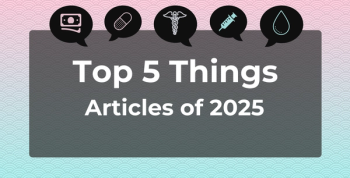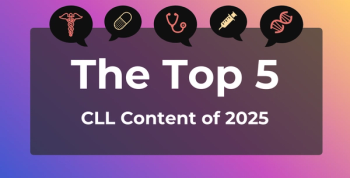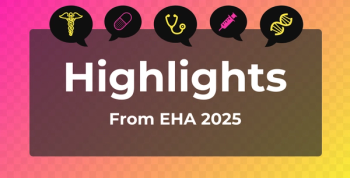
Amiselimod Most Effective S1P Receptor Modulator for Patients With MS
Among 6 sphingosine-1-phosphate (S1P) receptor modulators evaluated for use in patients with multiple sclerosis (MS), a new meta-analysis shows amiselimod had the highest efficacy.
Among 6 sphingosine-1-phosphate (S1P) receptor modulators evaluated for use in patients with
Fingolimod, laquinimod, siponimod, ozanimod, and ponesimod also were evaluated for their effectiveness and acceptability among 13 randomized controlled trials (RCTs; 5 two-arm studies, 6 three-arm studies, 2 four-arm studies) covering 10,554 patients. Searches for RCTs published until May 2020 took place in the PubMed, Cochrane Library, Embase, and ClinicalTrials.gov databases, using multiple sclerosis or MS and s1p receptor or s1pr, s1pr1, s1pr2, s1pr3, s1pr4, or s1pr5.
“This network meta-analysis systematically evaluated the efficacy and acceptability of S1P receptors, so as to find out the most appropriate therapeutic strategy and provide a reliable basis for the prescription of S1P drugs for patients with MS,” the authors wrote.
The primary outcome was treatment efficacy at reducing the annualized relapse rate, and secondary outcomes were adverse events leading to study discontinuation. Surface under the cumulative ranking curve (SUCRA) probabilities for hierarchical clustering of interventions ranked outcomes, with smaller SUCRA values indicating better treatment measures, the authors said.
The authors’ systematic review and network meta-analysis show that the best and worst treatments were amiselimod (0.4 mg; SUCRA, 8.1%) and placebo (SUCRA, 90.5%), respectively, while ozanimod (1 mg; SUCRA, 20.4%) and ponesimod (40 mg; SUCRA, 96.0%) were the best and worst accepted interventions.
All of the patients in the included trials were 18 years and older, had an
Laquinimod and siponimod were evaluated vs placebo at just 1 dose level each—0.6 mg and 2 mg, respectively—in all of their trials, and fingolimod, ozanimod, amiselimod, and ponesimod at various doses:
- Fingolimod: 0.5 and 1.25 mg
- Ozanimod: 0.5 and 1.0 mg
- Amiselimod: 0.1, 0.2, and 0.4 mg
- Ponesimod: 10, 20, and 40 mg
All medications were administered as oral daily doses. Adverse effects were atrioventricular block, leukoencephalopathy, elevated alanine aminotransferase, dyspnea, and infection; they were less likely in patients receiving ozanimod and most likely among those who got ponesimod and fingolimod.
Overall, although amiselimod 0.4 mg (standardized mean difference [SMD], 0.71; 95% CI, 0.59-0.86) had the highest efficacy, the 6 S1P receptors evaluated all had superior efficacy among patients with MS compared with placebo:
- Fingolimod 0.5 mg (SMD, 0.80; 95% CI, 0.76-0.84)
- Fingolimod 1.25 mg (SMD, 0.80; 95% CI, 0.76-0.84)
- Ozanimod 0.5 mg (SMD, 0.87; 95% CI, 0.80-0.94)
- Ozanimod 1.0 mg (SMD, 0.82; 95% CI, 0.76-0.89)
- Amiselimod 0.1 mg (SMD, 1.0; 95% CI, 0.74-1.34)
- Amiselimod 0.2 mg (SMD, 0.95; 95% CI, 0.61-1.35)
- Ponesimod 10 mg (SMD, 0.82; 95% CI, 0.6.3-1.08)
- Ponesimod 20 mg (SMD, 0.90; 95% CI, 0.68-1.19)
- Ponesimod 40 mg (SMD, 0.76; 95% CI, 0.59-0.98)
- Laquinimod 0.6 mg (SMD, 0.92; 95% CI, 0.88-0.97)
- Siponimod 2 mg (SMD, 0.91; 95% CI, 0.87-0.95)
“The lack of head-to-head comparisons has made it impossible to compare the efficacy and acceptability of [S1P receptor modulators],” the authors wrote. “This [network meta-analysis] indicated that amiselimod (0.4 mg) is the most effective treatment strategy as a S1P receptor [modulator] for MS patients.”
They cautioned, however, that wider interpretation of their findings is limited by the potential for selective, implementation, and measurement biases; lack of a unified measure for outcome indicator reports; and most of the studies included in their analysis took place in Europe and the United States, introducing a possible difference in treatment efficacy.
Future studies should be conducted to confirm these findings.
Reference
Tong J, Zou Q, Chen Y, et al. Efficacy and acceptability of the S1P receptor in the treatment of multiple sclerosis: a meta-analysis. Neurol Sci. Published online February 1, 2021. doi:10.1007/s10072-021-05049-w
Newsletter
Stay ahead of policy, cost, and value—subscribe to AJMC for expert insights at the intersection of clinical care and health economics.







































